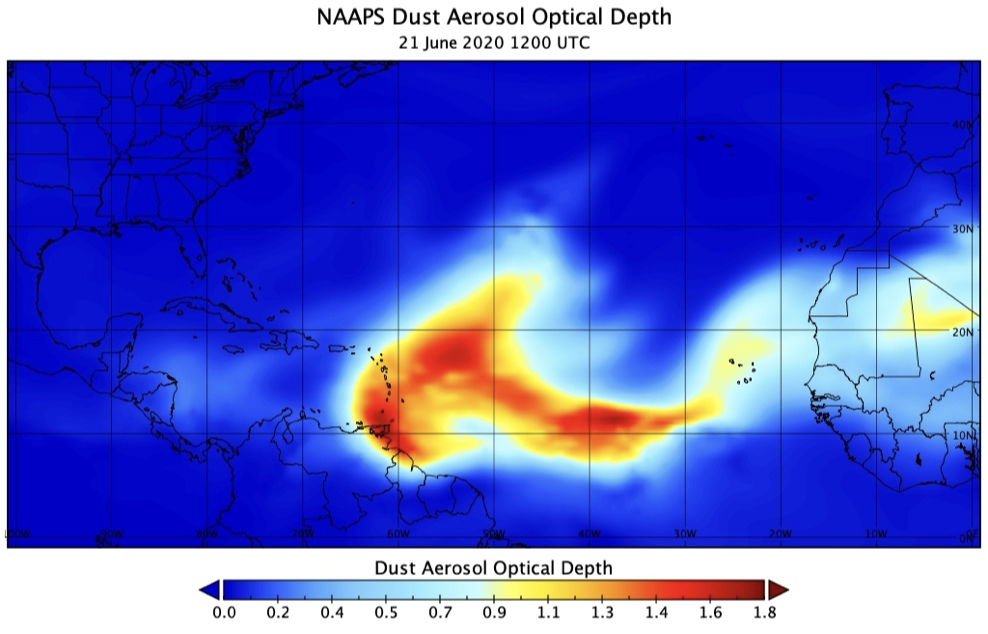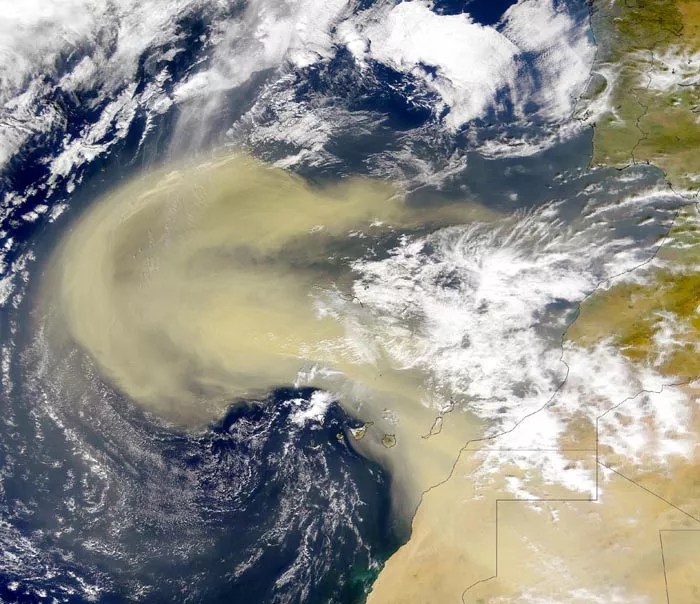
In June 2020, one of the largest Saharan dust outbreaks on record overspread the North Atlantic, eventually bringing dry, dusty air to much of the southeastern U.S. This study used chemical analysis of rainfall from several U.S. stations to detect various forms of lead associated with Saharan dust before, during, and after this record-breaking event. The magnitude and duration of these signals in the rainfall record were relatively small and short-lived, suggesting that historical Saharan dust outbreaks may be difficult to detect in sedimentary records.
Atmospheric dust is an important supplier of nutrients to surface ecosystems. For decades, Saharan dust has been hypothesized as a supplier of nutrients to Eastern North America. When atmospheric dust falls back to the earth’s surface, it accumulates on the ground and can be seen in what we call the sedimentary record. However, we have not been able to clearly detect Saharan dust in North America sedimentary records.
This study used chemical analyses of rainfall from several southeastern U.S. stations in June 2020 to detect various forms of lead (what are called isotopes) associated with Saharan dust before, during and after one of the largest Saharan dust outbreaks on record. Previous studies have shown that relative amounts of lead isotopes in rain can be used to identify dust in the atmosphere. A large Saharan dust storm emerged off the coast of Africa in June 2020 and eventually reached the southeastern United States, allowing us to compare independent observations from instruments on satellites and those on the ground. Precipitation samples from 17 sites within the National Atmospheric Deposition Program (NADP) were obtained from throughout the southeastern United States prior to, during, and after the arrival of the Saharan dust. Precipitation samples were measured for their lead composition and a peak was detected that peaked in late June 2020 when the dust blanketed the southeastern U.S. However, the size and short time period of the detectable signal makes it difficult to detect in sedimentary records.

■ Important Conclusions:
- The size and timing of the lead isotopes signals in the rainfall record were relatively small and short-lived, suggesting that even large, historical Saharan dust outbreaks may be difficult to detect in sedimentary records.
- Long-term studies that include chemical analyses of rainfall over longer time periods could provide a more quantitative analysis of Saharan dust over the southeastern U.S. and could help identify potential changes in the size and frequency of dust outbreaks associated with changing climate and weather patterns expected to occur in the future.
For more information on this study, contact aoml.communications@noaa.gov. The full article can be found at https://doi.org/10.1175/BAMS-D-20-0212.1.
.
